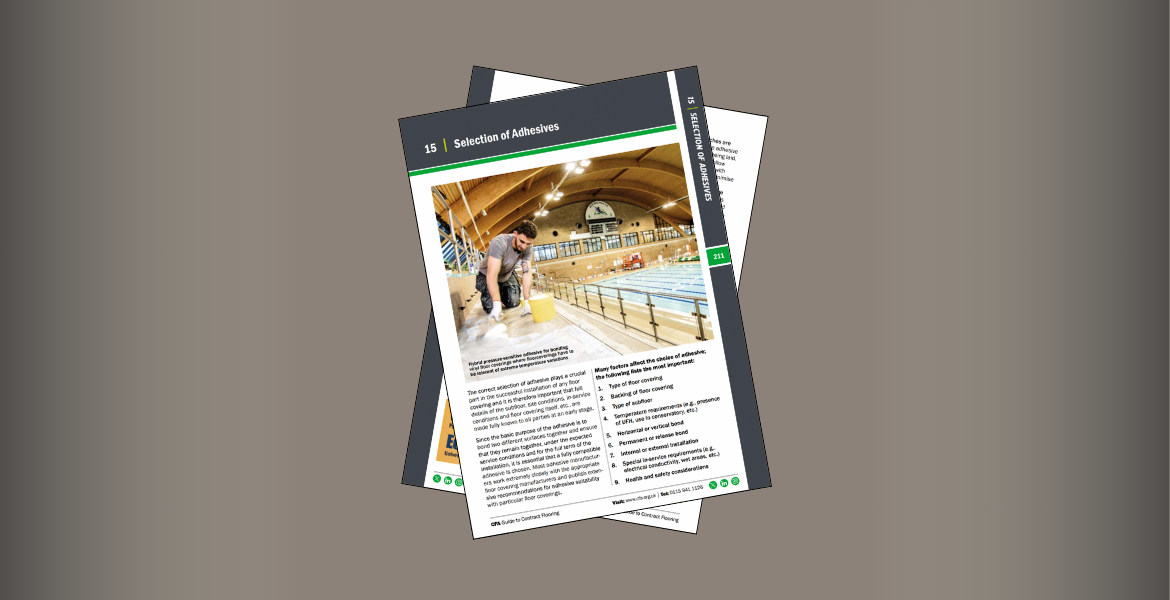
The correct selection of adhesive plays a crucial part in the successful installation of any floor covering and it is therefore important that full details of the subfloor, site conditions, in-service conditions and floor covering itself, etc., are made fully known to all parties at an early stage.
Since the basic purpose of the adhesive is to bond two different surfaces together and ensure that they remain together, under the expected service conditions and for the full term of the installation, it is essential that a fully compatible adhesive is chosen. Most adhesive manufacturers work extremely closely with the appropriate floor covering manufacturers and publish extensive recommendations for adhesive suitability with particular floor coverings.
Many factors affect the choice of adhesive; the following lists the most important:
Consider manufacturers’ substrate priming advice for individual adhesives. Most flooring adhesives are conventionally applied by steel trowel with the blade inclined at 60° with V-shaped notches along each edge.
The depth and spacing of these notches are specified to control the quantity of the adhesive applied and to suit the floor covering being laid.
With some adhesives it is possible to follow on using a fibre faced roller, pre-wetted with adhesive, to flatten out the ridges. The adhesive manufacturers take great care to ensure that the correct trowel notch size is specified for each adhesive and situation, and it is essential to follow their recommendations.
It is important that the correct notch size is maintained throughout the adhesive application.
Alternative methods of application, such as spray and roller, offer the advantage of adhesive application from the standing position and, with spray in particular, means that faster application rates can be achieved. Both these methods of application require specially formulated adhesives and will provide adhesive coatings without the normal ridged pattern.
It is important to remember that adhesives must be applied at the correct temperature and that good drying conditions are maintained throughout the installation. The open time of the adhesive should never be exceeded. All adhesives must be used in accordance with the instructions provided by the manufacturer and the British Standard Codes of Practice. Good working practices must be maintained at all times.
The relevant safety information for all specific adhesives should be reviewed before commencing work. Containers will be labelled accordingly.
All safety instructions should be followed and where necessary, the correct Personal Protective Equipment (PPE) should be worn as detailed in the manufacturer’s Material Safety Data Sheet (MSDS) and the specific job Method and Risk Assessment. Completion of the site assessments may require advice being conveyed to the client ensuring personal safety.
All adhesives must be applied to clean, smooth, structurally sound, and dry substrates. For more information on subfloor preparation and other technical flooring subjects, please refer to the CFA Guide to Contact Flooring.